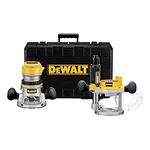4-1/2-in. Angle Grinders
With the right wheel, this versatile tool can cut and shape wood, masonry, or metal.

Synopsis: Used to cut wood, metal, and masonry, angle grinders can do things other tools can’t. Author David Crosby introduces readers to these tools, provides advice on which blades to use when, and also reviews eight models, highlighting his favorite.
The four most expensive words in construction are “I can fix that.” When problems come up unexpectedly in a construction project, I’ll do just about anything to make the fix faster. That’s why I keep three 4 1⁄2-in. angle grinders in my truck, all equipped with different wheels.
Basic angle-grinder techniques aren’t difficult to master. If you select the right cutting or grinding wheel, you’ll be surprised how much work you can do with this compact power tool. Whether you need to cut a concrete block, trim rebar, remove a damaged tile, or turn a rusty surface into shiny steel, an angle grinder can get the job done.
Angle grinders are categorized by the largest-diameter attachment they are designed to accept, and metal workers often choose 7-in. and 9-in. models. But a 4 1⁄2-in. grinder has more than enough muscle for most home building applications. Features may differ, but all angle grinders share the same basic anatomy.
Safety gear is essential
I used to wear standard safety glasses when grinding, but I discovered that particles would hit my face, bounce off the back of the lenses, and land right in my eyes. Now I wear a face shield, but fully enclosed goggles are also a good choice.
I strongly recommend wearing a respirator or dust mask when using a grinder. It’s also good practice to blow compressed air through the tool to clean out accumulated grit and dust from time to time.
These tools aren’t excessively loud, but ear protection is always a good idea. Standard earmuffs or foam plugs do the job nicely.
Of course, safety gear is just the first part of safe grinding. It’s also crucial to use the right abrasive wheel and the correct technique.
Match the wheel to the task
Abrasive wheels are what make an angle grinder such a versatile tool. Thanks to advances in abrasive technology, manufacturers now offer an impressive variety of grinding wheels, most of which are engineered to perform specific tasks. To get the most from your angle grinder and to work safely, you need to select the right wheel for the job at hand.
The universe of angle-grinder wheels divides logically into four groups: cutting wheels, grinding wheels, wire wheels, and specialty wheels. Cutting and grinding wheels have more variations than the other types because different abrasives and levels of coarseness are required for different materials and applications.
The rule of thumb when choosing and using wheels is never grind with a cutting wheel and never cut with a grinding wheel. Some wheels require the grinder’s standard guard to be replaced with a specialized guard. Make sure to follow manufacturer’s recommendations for the best results.
Success comes with an angled attack and lots of practice
There’s no doubt that an angle grinder requires some getting used to. Selecting the right wheel is essential, but when you get down to doing the work, only two basic techniques really apply.
For more photos and details, click the View PDF button below:
Fine Homebuilding Recommended Products
Fine Homebuilding receives a commission for items purchased through links on this site, including Amazon Associates and other affiliate advertising programs.

Cadex 18-Gauge Brad Nailer (CB18.50)

DEWALT 2 1⁄4-hp Router Combo Kit (DW618PK)

A House Needs to Breathe...Or Does It?: An Introduction to Building Science






















